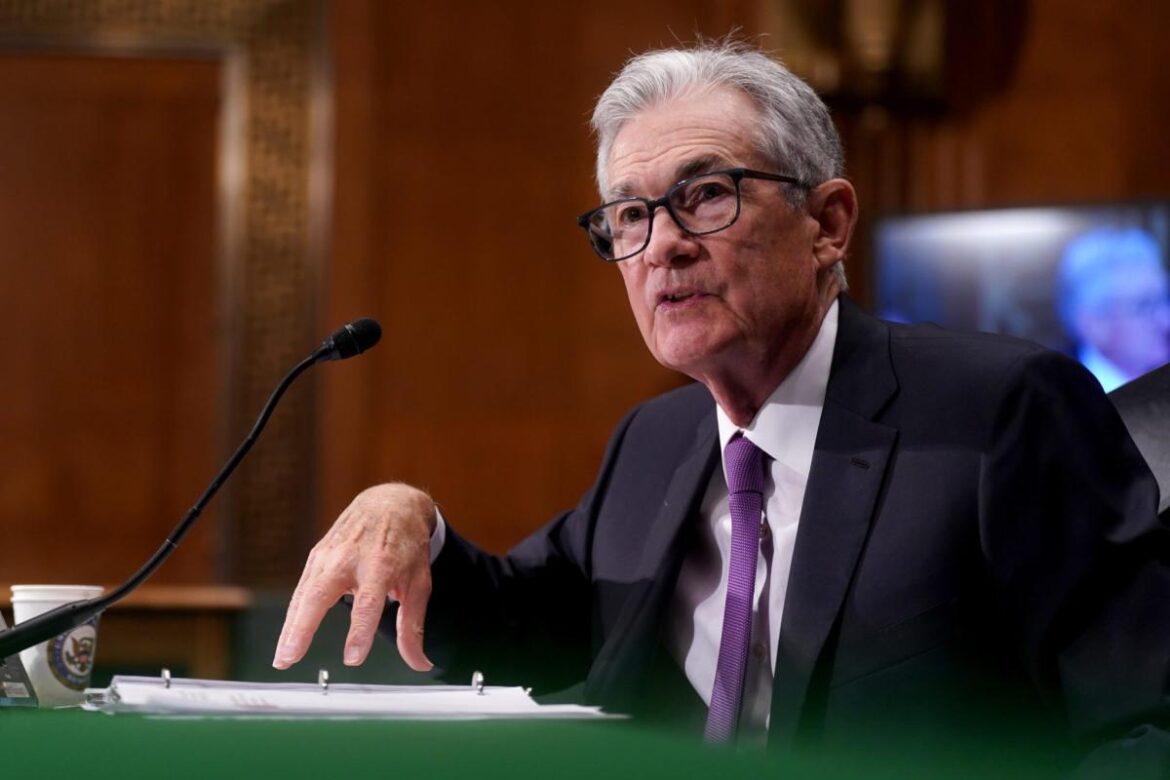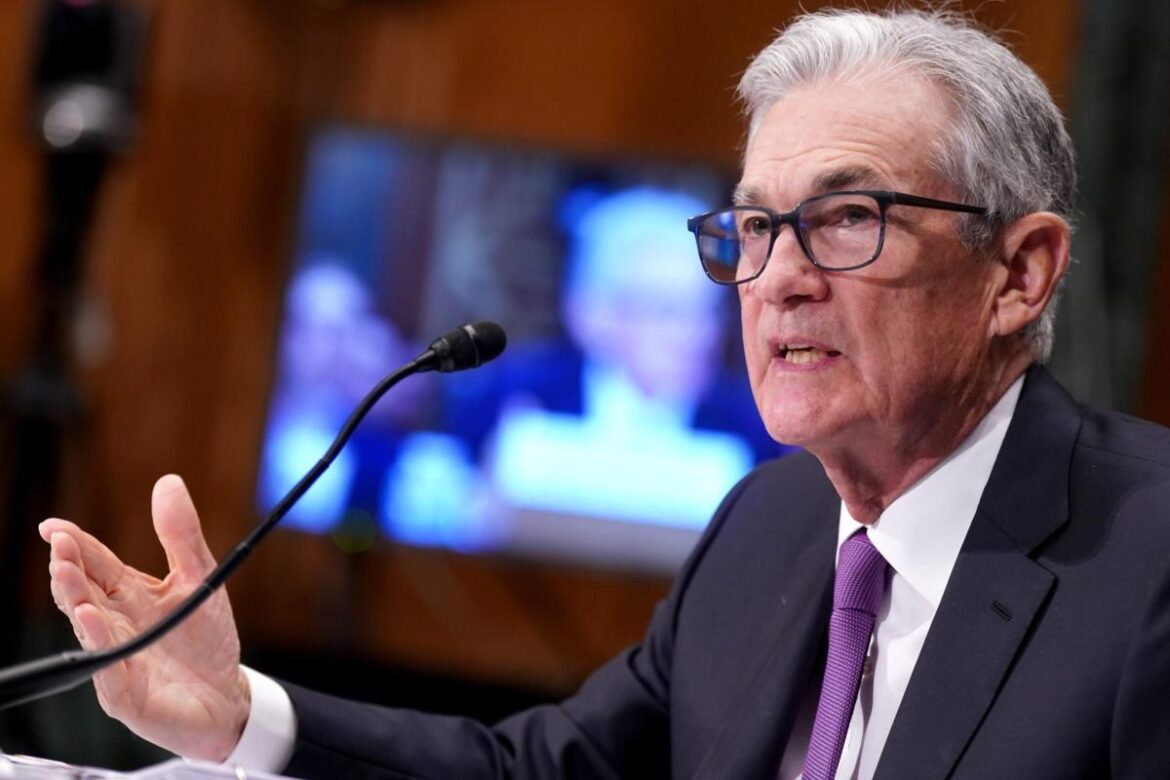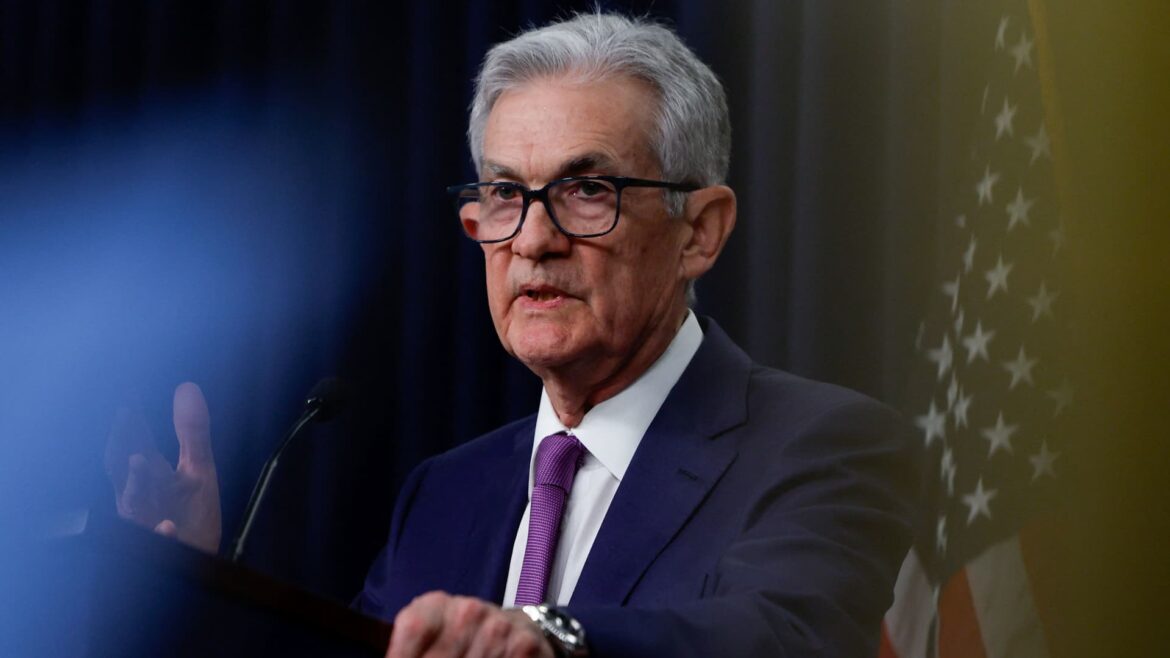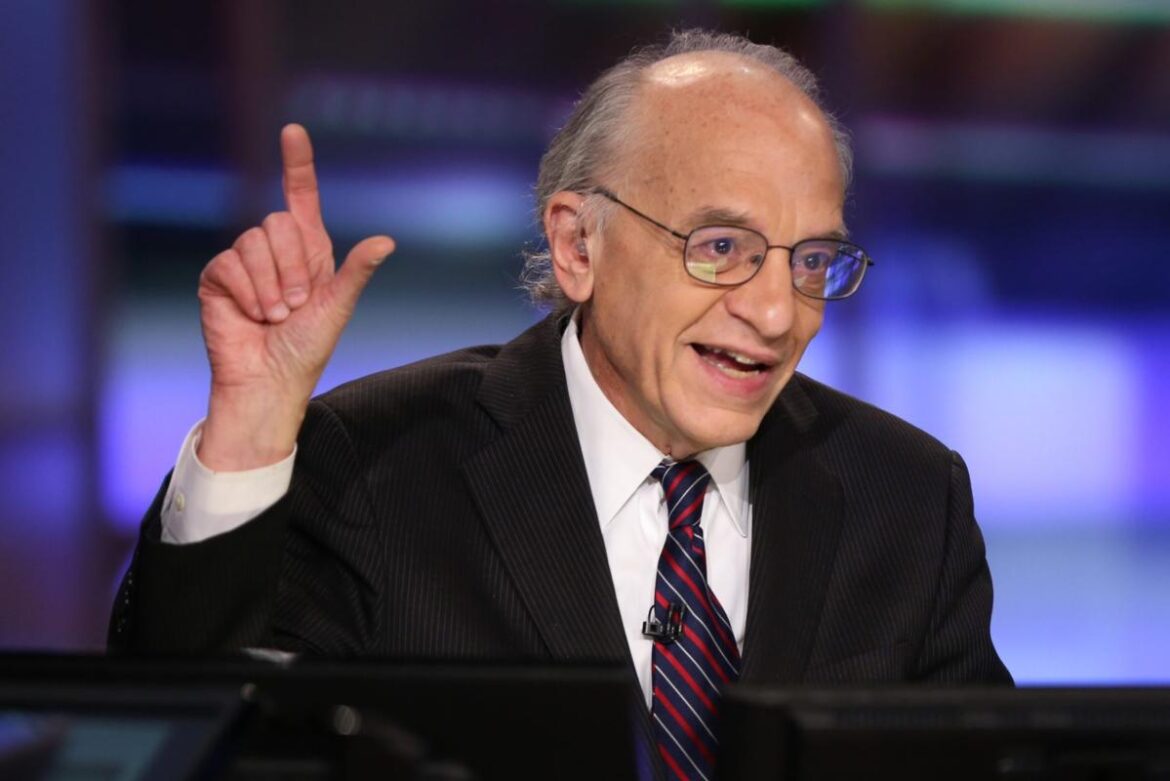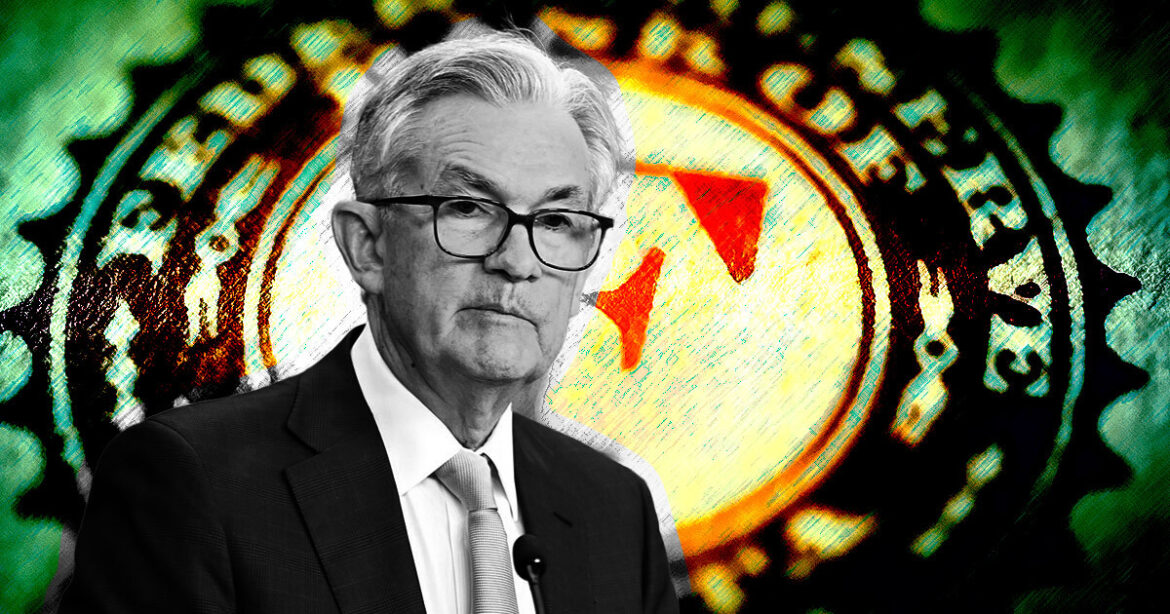Jerome Powell just revealed a hidden reason why inflation is staying high: The economy is increasingly uninsurable
Source link
Jerome
Jerome Powell says ‘the housing market is in a very challenging situation right now’ and interest rate cuts alone won’t solve a long-running inventory crisis
The housing market has a problem—millions of them. The country is short between 3.5 and 5.5 million housing units, according to various estimates. The roots of the shortage go back to the aftermath of the Global Financial Crisis, when cautious developers were hesitant to invest in new construction and set a precedent of undersupply that’s continued to now. Jerome Powell.
On Thursday, the Federal Reserve chair testified to the Senate Banking Committee against the backdrop of his recent decision not to cut interest rates, the big question investors and homebuyers are asking. Potential rate cuts have given investors hope about some much-needed relief for the housing market, which has struggled to cope with soaring mortgage and refinancing rates, but Powell testified that the housing market’s real problems run much deeper—and it will take more than just monetary policy to fix them.
“The housing market is in a very challenging situation right now,” Powell said on Capitol Hill on Thursday. “Problems associated with low rate mortgage [lock-in] and high [mortgage] rates and all that, those will abate as the economy normalizes and as rates normalize,” he said, referring to the mismatch between something approaching 90% of homeowners with mortgage rates below 6% and the current market offering above 7%. “But we’ll still be left with a housing market nationally, where there is a housing shortage.”
‘There are a ton of things happening’
Powell explained the current problems facing homebuyers and sellers to the committee: “You have a shortage of homes available for sale because many people are living in homes with a very low mortgage rate and can’t afford to refinance, so they’re not moving, which means the supply of regular existing homes that are for sale is historically low and a very low transaction rate,” Powell said. “That actually pushes up the prices of other existing homes, and also of new homes, because there’s just not enough supply.”
But it’s a bigger issue than buyers and sellers being locked in, he said. “There are a ton of things happening … because of higher rates, and those in the short-term are weighing on the housing market … it’s more difficult [for builders] to get people [labor] and materials,” Powell said. “But as [mortgage] rates come down, and that all goes through the economy, we’re still going to be back to a place where we don’t have enough housing.”
The pandemic only made things worse. High inflation has made materials and labor costs far pricier, and ballooning mortgage rates have pumped the brakes on an already-slow sector. National Association of Realtors data showed that there were only 3.2 months of available housing supply as of the end of last year, about half as much as there should be in a balanced market.
Markets expect the Fed to announce rate cuts this year—but while that will offer some short-term relief, it won’t solve the housing market’s deep–set supply problems.
Powell noted that restrictive zoning laws play an important role in limiting new construction. He also pointed out that rising mortgage rates have discouraged longtime homeowners who locked in lower rates from moving, which has limited the number of existing homes on the market and left new homebuyers struggling to find affordable options.
Powell’s threading a tricky needle—the housing market is a big driver of the domestic economy, and overstressing it by keeping interest rates high for too long could threaten the rest of the economy. On the other hand, cutting rates too soon—or too quickly—in line with the industry’s demands could undermine the Fed’s yearslong attempts to stick a soft landing and keep inflation under control.
“Housing activity accounts for nearly 16% of GDP according to NAHB estimates,” wrote a group of housing industry trade organizations in a letter to Powell last fall. “We urge the Fed to take these simple steps to ensure that this sector does not precipitate the hard landing the Fed has tried so hard to avoid.”
This story was originally featured on Fortune.com
Federal Reserve Chair Jerome Powell holds a press conference following the release of the Fed’s interest rate policy decision at the Federal Reserve in Washington, U.S., January 31, 2024.
Evelyn Hockstein | Reuters
Fed Chairman Jerome Powell said Wednesday that the central bank would likely not be comfortable enough with the path of inflation by its next meeting in March to cut interest rates.
“Based on the meeting today, I would tell you that I don’t think it’s likely that the committee will reach a level of confidence by the time of the March meeting to identify March as the time to do that. But that’s to be seen,” Powell said.
The statement came in a news conference after the Fed’s January meeting, where the central bank left its benchmark interest rate unchanged. Powell did say earlier in the news conference that rate cuts would likely begin at some point this year.
Stocks fell to their session lows as the Fed chief dashed hopes of traders who want the central bank to slash rates sooner, before there’s a recession. The Dow Jones Industrial Average lost 300 points at one point.
The Fed’s policy statement released earlier Wednesday included several tweaks that suggested the central bank was taking further rate hikes off the table but not yet ready to cut. Powell’s comments appeared to clarify for traders that the stance would continue for at least one more meeting.
“The Fed was badly burned in late 2021 and 2022 when they thought high inflation would be transitory, then got caught by surprise when it was higher and more persistent than expected. They want to avoid making the same mistake twice,” Comerica Bank’s chief economist, Bill Adams, said in a note Wednesday afternoon.
“The Fed will wait to pull the trigger on rate cuts until they see the whites of 2% inflation’s eyes,” Adams added.
Powell also declined to commit to a series of rate cuts once the Fed makes its first move, saying that it “would depend on the data.”
The central bank’s next two policy decision dates are scheduled for March 20 and May 1. In recent months, traders and Wall Street strategists have focused on those two meetings as likely candidates for the first rate cut, as inflation continues to fall and job growth slows.
The Fed’s preferred inflation gauge, the personal consumption expenditures price index, is updated near the end of each month. There will likely be only one more PCE reading before the Fed’s March meeting, but three more before May.
There will also be three more federal jobs reports released before the May meeting, with the January report due out on Friday.
Don’t miss these stories from CNBC PRO:
With the stock market in ‘striking distance’ of all-time high, Wharton’s Jeremy Siegel warns the only thing that can derail it is Jerome Powell
The end of the year often marks an uptick for the stock market, with a so-called Santa Rally pushed by brokers offloading dud stocks and buying into performers for a year-end boost. Many on Wall Street say these bullish signals could continue into 2024, with analysts saying they expect to see the S&P 500 topping out at 4,700. The famed stock watcher Jeremy Siegel, of the University of Pennsylvania’s Wharton Business School, is one of them, saying the Dow Jones could also be in for an “all-time high” in the coming months. There’s just one thing standing in its way.
Siegel has long been cautious of the Federal Reserve’s approach to rate hikes, often suggesting that the central bank’s chairman, Jerome Powell, needs to adopt an element of flexibility. And in his comment on Wisdom Tree this week, Siegel once again made the argument for moderation of policy.
The Dow Jones, currently up 9.2% for the year to date and at 36,204 close to its highest level on record, could be held back by the Fed if it remains overly committed to its 2% inflation target, Siegel said.
“The Dow [is] within striking distance of making an all-time high—something I see over coming months,” he wrote. “The primary risk that could knock us off course is a Federal Reserve that remains fixated on inflation fears.”
Thus far the Fed has maintained it will not sway from its pursuit of a 2% inflation target. In November, Fed Chairman Powell said: “We remain strongly committed to bringing inflation back down to our 2% goal…The process of getting inflation sustainably down to 2% has a long way to go.”
However, in holding rates at 5.5% instead of increasing them following the last couple of Fed meetings—despite inflation remaining at 3.2%—Powell has suggested some leniency.
A degree of flexibility
Although Powell has signaled no intention of letting inflation sit at a benchmark other than 2%, he has begun to give hints that the Fed’s approach may change.
“We are getting what we wanted to get” out of the economy, Powell said during an event at Spelman College in Atlanta on Dec. 1, adding, “Having come so far so quickly, the [Fed] is moving forward carefully, as the risks of under- and over-tightening are becoming more balanced.”
This has led the Wharton professor to one conclusion: “There will be no rate hike at the next meeting.”
He explained: “The current Powell Fed is not one that wants to surprise the markets. Powell gave a speech on Friday and, if he was looking to hike rates in December, he would have signaled that to the market.”
Siegel hasn’t always been so confident that Fed policies would simultaneously manage to rein in inflationary pressures and keep the economy intact. Indeed, this summer he warned that “YOLO [you only live once] consumers” were propping up the economy.
However, he cautioned that these spenders would soon run out of cash—a theory backed by evidence from Citigroup CEO Jane Fraser—while also predicting that the second half of the year wouldn’t prove a “great time for the markets.” With the S&P 500 up nearly 5% for the past month—and predicted to continue performing well—Siegel is looking ahead to the next stage in the Fed’s plan.
Dare we say cuts?
Murmurings of rate cuts are beginning to rumble through the market as 2024 approaches, as analysts take stock of a more stable market.
Goldman Sachs says it estimates the Fed will cut rates for the first time in Q4 2024. The Bank of America says it will be the middle of 2024, while Citi said it expects rate cuts of 100 basis points throughout next year.
Siegel isn’t so convinced. He said the timing of cuts “depends on how weak the data come in and whether inflation continues to come down.”
He added: “One note of caution as you go into the new year and hear more talk of hikes or drops in the Fed funds rate will be after the release of the Dot Plot in December.”
The Dot Plot is a chart released by the Fed based on its economic projections, and it illustrates the board’s views on the appropriate pace of policy. It also provides a target range or target level for the federal funds rate moving forward.
Siegel also pointed out that in September the Fed had estimated it would hike rates once more before the end of the year.
The economist quipped: “I suspect social media will be ablaze with comments at how hawkish the Dot Plot reads out. Just remember how good their own forecasting record has been.”
This story was originally featured on Fortune.com

Historically, a Santa rally happens in the weeks leading up to Christmas when a collective sense of goodwill bleeds into equity markets. This is typically a seasonal blip and nothing to write home about. But this year, we could see a far more significant rally as the United States Federal Reserve, the Securities and Exchange Commission and BlackRock line up to deliver a bonanza of holiday cheer.
The Federal Open Market Committee (FOMC) finished its penultimate meeting of 2023 on Wednesday, and it decided to hold interest rates steady. As we know, U.S. inflation has been tamed from a high of 9.1% in June 2022 to its current level of 3.7% thanks to the Fed’s aggressive interest rate hiking cycle that brought the Federal Funds Rate to 5.25-5.5% — its highest level since 2001.
However, while this campaign has been unquestionably successful, markets remain deeply concerned about the potential of higher rates, or even rates sustained at this level, to trigger a recession in the U.S. The Fed also now shares these concerns as it softens to some degree against inflation.
Related: Bitcoin is evolving into a multiasset network
Should the next Bureau of Labor Statistics inflation reading on Nov. 14 show a move downward, we can expect to see money flooding into risk assets as investors anticipate the next interest rate decision to be a cut. This will, of course, have a positive impact on equity markets, and even bond markets as yields fall and the back end of the yield curve flattens.
GUNDLACH: THINK CPI WILL COME DOWN BASED ON INFLATION MODEL
— *Walter Bloomberg (@DeItaone) November 1, 2023
Crypto markets will follow suit, with Bitcoin (BTC) remaining strongly correlated to main markets. What will provide an extra shot in the arm, though, will be the approval of the first U.S.-based Bitcoin spot ETF — which is likely to come before Jan. 10, as J.P. Morgan predicts. This is underlined by the excitement that rumors of the approval of BlackRock’s application have generated over the past few weeks, which sent Bitcoin back up to $35,000: a level it hasn’t enjoyed since the pre-Terra Luna days of 2022.
Eventual approval will provide further impetus for Bitcoin, Ether (ETH), and large swathes of altcoin markets. However, if investors are following the old adage, “buy the rumor, sell the fact”, it may not be huge. We might even see a small dip before a more sustained rally. There is little doubt, however, that approval will be positive for cryptocurrency. Indeed, longer-term it has the potential to be the greatest driver of crypto markets since the conditions created by the Covid pandemic saw BTC top $60,000 in 2021.
Related: Sam Bankman-Fried’s trial is telling a story of classic financial deceit
Potential spanners in the works include higher inflation in the U.S. before the end of the year, and potentially a ramping up of tensions between Israel and Palestine. Either of these could put the brakes on an end-of-year Santa rally — but that does not seem to be the direction of travel right now.
Indeed, Bitcoin has already enjoyed quite a rally this year. While the fallout from the FTX crash in November 2022 saw BTC fall to the $15,000 range and start 2023 at a paltry price of slightly more than $16,000, its level today of $34,000 to $35,000 represents growth of more than 100%. Of course, it’s only the very smart or lucky traders who ever manage to take advantage of Bitcoin’s extreme volatility. Year-on-year, many crypto investors are still nursing losses.
For FTX investors, for example, while there are now hopes some will get their Bitcoin, Ether, and other tokens back, most will face somewhat of a Pyrrhic victory as they stare down the barrel of 60% to 70% losses. This accounts for the generally pessimistic mood in the crypto market, which would otherwise look like the winner of 2023.
As we approach the end of the year, then, it would do all of us well to take a step back and view Bitcoin and crypto markets with fresh eyes. Even if we don’t get a much anticipated and, perhaps, deserved Santa rally, we can celebrate the fact that crypto has survived another challenging year and is ending on a high.
Lucas Kiely is chief investment officer of Yield App, where he oversees investment portfolio allocations and leads the expansion of a diversified investment product range. He was previously the chief investment officer at Diginex Asset Management, and a senior trader and managing director at Credit Suisse in Hong Kong, where he managed QIS and Structured Derivatives trading. He was also the head of exotic derivatives at UBS in Australia.
This article is for general information purposes and is not intended to be and should not be taken as legal or investment advice. The views, thoughts and opinions expressed here are the author’s alone and do not necessarily reflect or represent the views and opinions of Cointelegraph.
Fed Chair Jerome Powell discusses target interest and inflation rates at Jackson Hole summit
The robust growth of the U.S. economy may necessitate additional interest rate increases to mitigate inflationary pressures, according to Federal Reserve Chair Jerome Powell.
Speaking at the Jackson Hole Economic Symposium, an annual conference of central bankers in Jackson Hole, Wyo., Powell outlined the uncertainties surrounding the economic outlook while indicating the possible need for further restrictive monetary policies, as reported by the Associated Press.
Inflation still too high
Despite inflation having declined from its peak, Powell maintained that it remains excessively high. He further emphasized that the Federal Reserve remains watchful for signs that the economy is not decelerating as predicted. The central bank is poised to escalate rates further, if necessary, and plans to maintain a restrictive policy level until it sees substantial evidence of sustained inflation reduction towards their 2% target.
As Powell noted, the economy has been expanding at an unexpected pace, coupled with consistent consumer spending, potentially sustaining high inflation pressures. This observation marks a significant departure from his statements in the previous year, where he explicitly warned of continued sharp rate hikes by the Fed to curb soaring prices.
The Fed’s rate hikes have resulted in significantly increased loan rates, making it challenging for Americans to afford homes or cars and for businesses to finance expansions. Despite this—and contrary projections—the U.S. unemployment rate remained steady at 3.5%, barely above a half-century low. The persistent inflation and robust employment figures underscore Powell’s concern about the rapid economic growth, indicating a potential need for higher interest rates to act as a restriction.
Contrary to expectations earlier in the year, most traders now foresee no interest rate cuts before mid-2024 at the earliest. According to Powell, the central bank’s policymakers believe their key rate is sufficiently high to restrain the economy and cool growth, hiring, and inflation. However, he acknowledged the difficulty in determining the necessary borrowing costs to slow the economy, resulting in constant uncertainty regarding the effectiveness of the Fed’s policies in reducing inflation.
While traders and economists have shown increased optimism for a “soft landing”—the Fed achieving its target inflation rate without inducing a steep recession—others remain skeptical.

